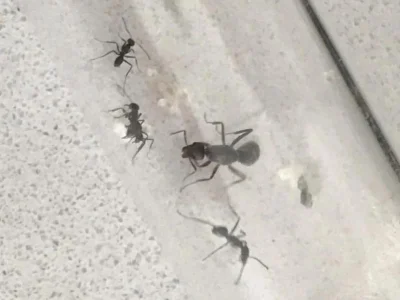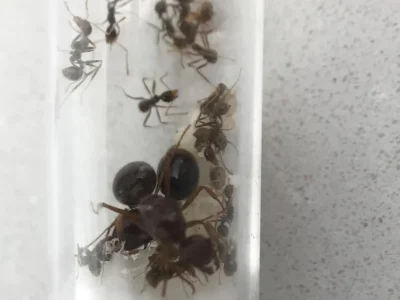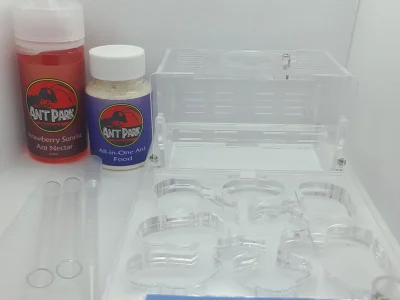Description
Founding Type: Semi-Claustral
Diet: Gently feed the queen small sugars weekly. When workers arrive, feed sugars and protein regularly.
Setup: At the founding stage, a test tube setup or founding chamber with a water source is sufficient. Once the number of workers exceeds ~10, they should be moved into a small nest.
Queen size: Medium: 11mm
Worker size: 9mm
Basic Ant Care Guide
3 Basic Elements of Survival…
FOOD
Adult ants consume only liquid food
Provide liquid sugar food such as our ‘Ant Juice’
If your ants are in a nest, have available at all times in a small dish (not too much that they may drown or get stuck!) or liquid feeder
If your ants are in a test tube, feed as much as they can consume within an hour, every week or two. You can use a small dish or put a few drops onto the cotton in the end of the tube- do not soak the cotton as this may prevent oxygen transfer
Larvae require protein. Worker ants will bring insects (eg. meal worms or crickets) to the larvae. Feed one insect as often as they will take it, usually every few days to a week
WATER
For humidity & to drink
If your ants are in a nest, top up your nest sponge water regularly
Provide additional water filled test tube plugged with cotton in nest outworld
If your ants are in a tube, change into a fresh tube if it dries up
AIR
Ants do not have lungs but breathe through holes in their exo skeleton called ‘spiracles’
Spiracles are very efficient at absorbing oxygen so ants don’t require lots of air but cannot survive without it
Never fully block their test tube and restrict air (eg. with a plug or by joining two tubes together to transfer)
Helpful Hints…
Ants LOVE to be cramped! They don’t like having too much space. Keep them in their test tube until it is FULL! Moving them into a nest that is too big can cause them to stress & your colony may fail…
Most single queen ants are claustral which means she will not need feeding until her first workers arrive (with the exception of some species such as Myrmecia and Polyrhachis who are semi-claustral and will need to feed). Once the first workers arrive you can feed a small drop of liquid sugar into their tube.
Find a nice warm place for them to live, NOT in direct sunlight.
Generally between 20-24 degrees and 60% humidity is ideal
Clean out your ant nest/outworld of uneaten food & debris regularly to prevent mould
Things to Look For
- New eggs
- Eggs hatching into larvae
- Pupae or cocoons
- New workers (& major workers for some species)
This is intended only as a brief guide. Please research the specific care needs for your ants





Reviews
There are no reviews yet